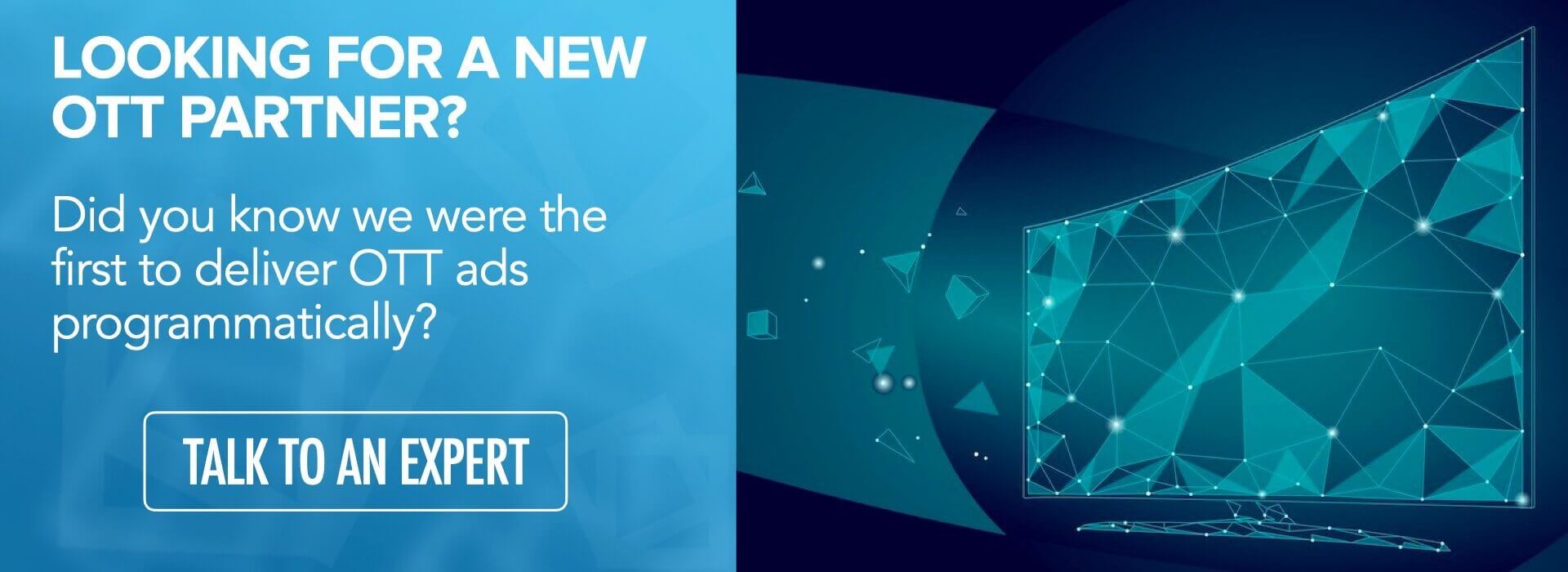- Home
- Strategus Blog
- 4 Reasons to Implement Linear TV Extension
4 Reasons to Implement Linear TV Extension
 Andy Dixon
Andy Dixon
6 minutes read

You have certain goals to hit with every linear TV ad campaign you launch. But because this advertising channel has traditionally had a lack of visibility, it's difficult to know how your ads are really performing and who's actually exposed to your linear TV ads.
That poor visibility may have you and your team considering making a complete switch to OTT/CTV platforms. But that's not the optimal solution.
Missing out on the 70 million viewers who still hold cable subscriptions can be catastrophic for your marketing efforts, especially if your products and services are aligned with a demographic that primarily watches linear television.
Instead, linear TV extension (LTVE) can help you identify underexposed audiences and create a refined plan to make sure they see your ads via OTT/CTV campaigns.
In this article, we'll explore more of the benefits of a linear TV extension and the advantages of advertising through both linear TV and OTT/CTV.
4 Reasons to Implement a linear television extension
An LTVE approach gives you more insight into households that did or didn't receive exposure to your linear TV ads and then creates a plan so those households don't fall through the cracks or receive substandard brand experiences. Here are four key reasons to take this approach:
1. Reach untapped audiences
Through LTVE, you can break into the OTT/CTV advertising space. This approach uses automated content recognition (ACR) to identify unexposed or underexposed viewers who need more opportunities to see your storytelling or sequential ads. Through OTT and CTV platforms, you can refine your reach to the viewers in your target market who don't have reliable access to broadcasting.
Streaming television platforms give you fine-tuned control over which viewers are and are not exposed to your ads. This ensures that your viewership on the new platforms is aligned with other factors in your buyer persona profiles. As more and more households switch to streaming platforms, you can regain their attention with omnichannel marketing.
2. avoid ad fatigue
ACR technology can identify what content is being consumed by users so you can determine the best ad placement strategies for your audience's unique preferences and behaviors. This is useful as you devise your ad reach and frequency strategy, but it plays a uniquely beneficial role in preventing ad fatigue.
Ad fatigue occurs when your audience is exposed to an ad (or ads within a specific marketing campaign) so frequently they begin to be hostile or indifferent toward your brand. While having a high enough ad frequency to become memorable and top-of-mind is important for any brand recognition or sales campaign, too much exposure is damaging. It also wastes ad spend on sub-optimal views. Ad fatigue can occur across both linear TV and OTT platforms, so you don't want a too-high cumulative number of views.
But using ACR data can help you mitigate the risk of putting your ad in front of the same viewer too many times within a set time period. If you create detailed profiles and preferences about who views your ads, your ads will predominantly align with a given program on streaming service based on viewer interests. But you can also set a cap so the audience only sees your ad set again the same show a certain number of times per day.
For example, a portion of your audience may be binge-watching a favorite show. Because they're watching multiple episodes in a row, they may be overexposed to your ad within that single context. Setting a cap based on what ACR sees them watching reduces the exposure frequency and protects your brand and audience from ad fatigue.
3. test, measure, and adjust CTV and tv efforts
LTVE lets you use both linear TV and streaming TV. This is an excellent opportunity to measure the different responses your ads may garner across either platform and test which factors get the best traction. You can build up a detailed understanding of which marketing tactics work best in CTV ads, linear TV ads, and across both platforms.
Without an LTVE tool, you may only have one type of audience to test. Running manual tests against completely separated campaigns can also lead to inaccurate, incomplete, or confusing results. LTVE makes testing, analysis, and implementation easier.
4. optimize reach
Ultimately, LTVE lets you optimize reach by identifying underexposed households and creating cost-effective plans to reengage them. The first step in our LTVE process is to identify the number of households in your desired geographic radius who were either underexposed to your LTV advertisements or didn't see them at all. Then you can determine your optimal budget for exposing those households to your ads.
At this stage, it's important to focus on optimizing reach rather than just increasing reach. After all, many of those missed households can be reached through a reasonable increase in ad spend. However, some of them will be outliers and require many more dollars per household to effectively reach. Those shrinking marginal gains can be too costly to pursue, so it's better to identify optimal reach goals rather than trying to reach everyone.
why not abandon linear campaigns altogether?
Your target audience is still using linear television. If you make the switch to focus exclusively on CTV/OTT platforms, you risk missing large sections of your target market in the key geographic radius you're advertising in.
Using CTV and LTV more collaboratively lets you catch customers before they slip through the cracks. Omnichannel and multichannel approaches also let you reach consumers in different contexts, which helps them form deeper connections with your brand.
contact us today to start implementing a linear tv extension
Underexposure can be getting in the way of your big-picture marketing goals in a way that's hard to measure without the right tools. LTVE doesn't just identify the households that missed out on your campaigns; it also helps you implement the right strategies to reengage them across different media types. Contact Strategus today to learn more about LTVE and OTT/CTV marketing services.


Andy Dixon is a seasoned Content Writing Specialist at Strategus, renowned for his expertise in creating engaging and impactful digital content. With over a decade of experience in content creation, Andy has honed his skills in a variety of niches, ranging from technology and marketing to education.
Strategus is a managed services connected TV(CTV) advertising agency with over 60,000+ campaigns delivered. Find out how our experts can extend your team and drive the result that matter most.
Talk to an Expert
Seeking a Custom CTV Strategy That Delivers?
What to read next

Third-Party Data Targeting for CTV: Benefits & Tactics
Third-party data. It’s a term that’s thrown around, and yet few take the time to detail its pros and cons — much less strategies for using...
7 minutes read

First-Party Data Targeting: Benefits and Tactics for CTV Advertising
First-party data is the information that companies collect directly from their customers rather than through intermediaries. Advertisers use this...
10 minutes read

Foot-Traffic Attribution: Tying Ad Impressions to In-Store Visits
The marketing funnel has changed. Today’s shoppers often begin researching products from the comfort of their homes and don’t set foot into a store...
8 minutes read

CTV Attribution: What It Is and How It Works
Connected TV (CTV) viewing is on the rise — and that’s good news for marketers. Not only can CTV ads be precisely targeted to individual households,...
9 minutes read

















